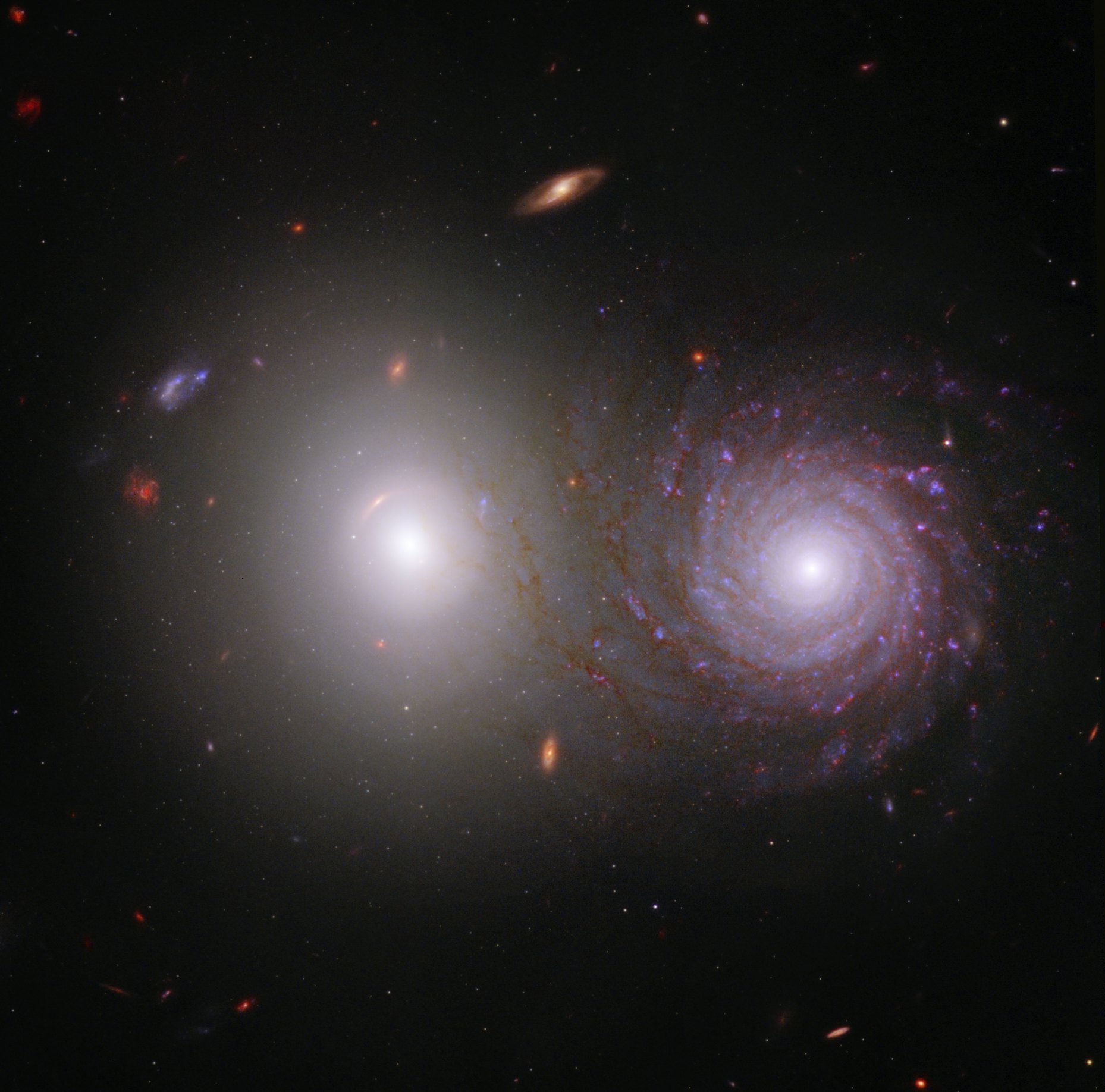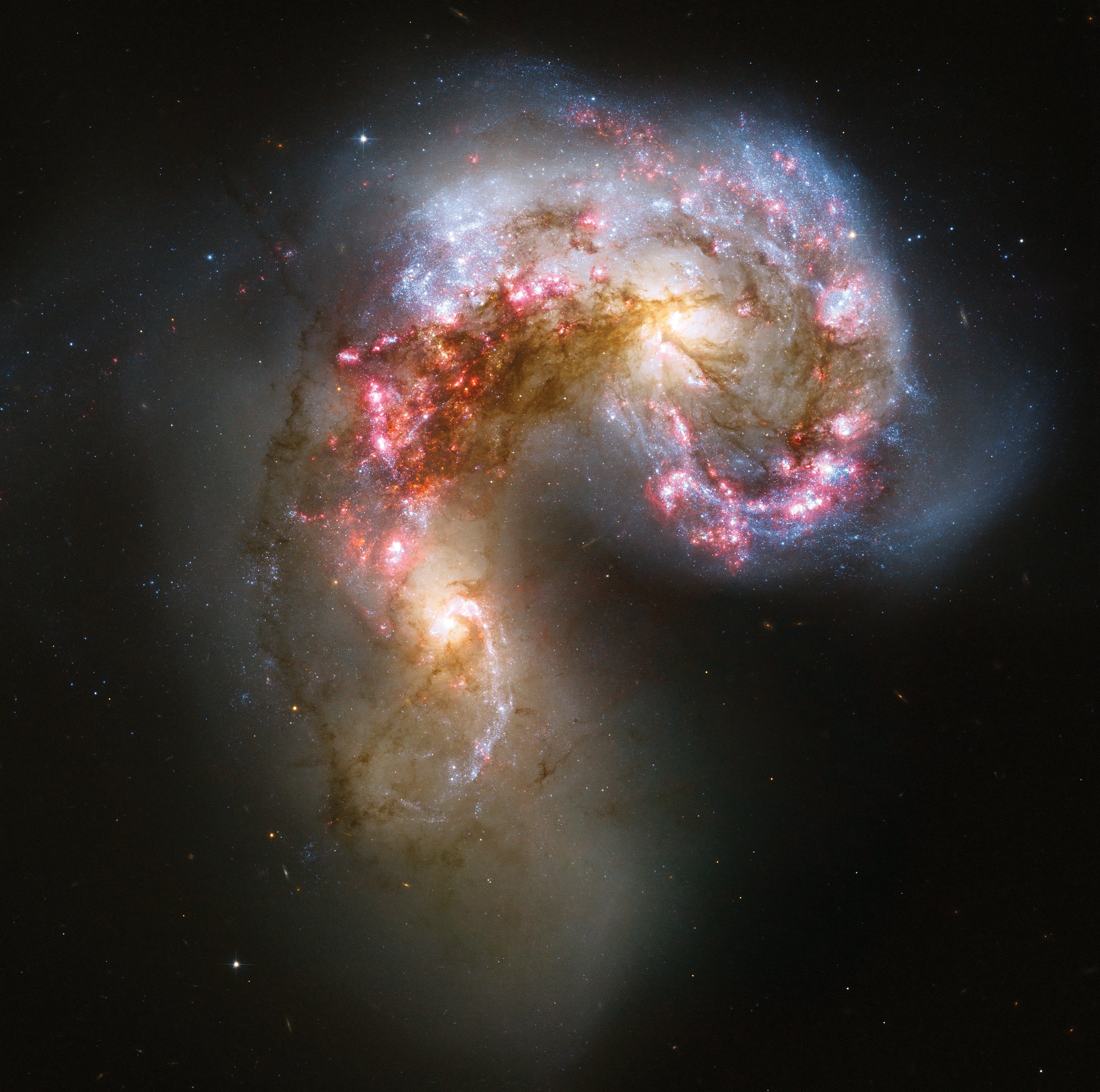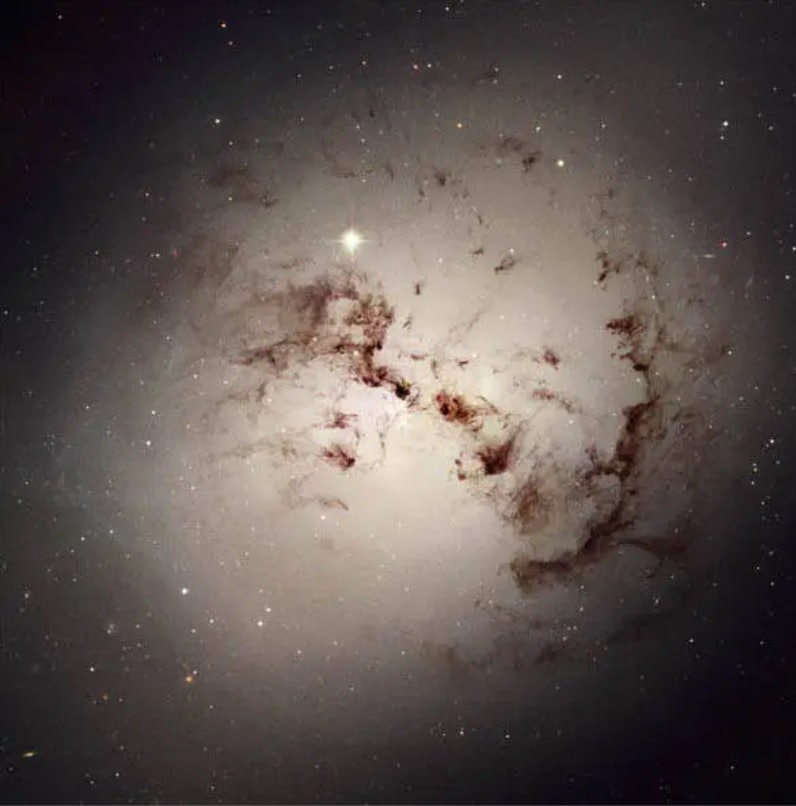
The Milky Way is part of a billion-light-year-wide structure called the Supergalactic Plane, but we don’t exactly fit in.
Most of the galaxies in the Supergalactic Plane are messy elliptical blobs. In this section of the universe, our orderly disk and delicate spiral arms are sort of weird. According to a recent study, which used computer simulations to explore how the Supergalactic Plane evolved, that’s because this slice of space is extremely crowded with galaxies, and they keep colliding — which means that in about 5 billion years, we’ll fit right in.
Durham University astrophysicist Till Sawala and colleagues published their findings in the journal Nature Astronomy.

Demolition Derby, But With Galaxies
Sawala and colleagues simulated how a gargantuan, flattish expanse of galaxies, called the Supergalactic Plane, evolved from the Big Bang until today. The Supergalactic Plane is a network of dense galaxy clusters, linked by filaments of galaxies held together by the shared gravity of their invisible haloes of dark matter. It’s home to the Virgo Supercluster, a clump of galaxy clusters that includes the Local Group: a group of 36 galaxies, one of which is our own Milky Way. (Clearly, we’re talking about a truly enormous structure, one many times larger than even a galaxy supercluster. It’s hard to fathom, but our universe does have structures at these tremendous scales: clumps, filaments, and networks of matter with patches of void in between.)
“The French astronomer Gerard de Vaucouleurs noted that many of the nearby galaxy clusters appear to lie in a plane, and defined this plane as the ‘supergalactic plane,” Sawala tells Inverse. “This type of planar arrangement stands out, but it is not unusual.” The plane in question runs perpendicular to our galaxy’s disk, just for the record.
There are two main things to remember about the Supergalactic Plane. One is that it’s very densely populated compared to the rest of the universe, teeming with clusters of galaxies. The other is that most of the galaxies in the Supergalactic Plane are elliptical galaxies: messy roundish blobs of stars and gas, as big as our galaxy but without a disk or spiral arms. And for decades, astronomers have wondered why.
Authors used this software to simulate how the Supergalactic Plane could have ended up looking like it does. The answer turns out to be pretty messy: In all those clusters and superclusters, galaxies keep colliding.
Galaxies like the Milky Way are orderly and structured; stars orbit the center of the galaxy in mostly the same plane, forming a disk. Sometimes, spiraling arms of denser material form within the disk. When two galaxies collide and merge, all that complex structure gets squashed together into one big messy ellipse.
No Going Back
And once a galaxy’s orderly disk structure has been demolished by a collision, there’s no fixing it.
“Because disk galaxies represent a state of order, and elliptical galaxies represent a state of disorder, it is generally not possible to reverse the process and ‘regrow’ spiral arms,” says Sawala.
A galaxy with a huge reservoir of interstellar gas might manage, because the gas could eventually form new stars, which could settle into a new disk and pull the rest of the galaxy’s mass into shape along with them. But most elliptical galaxies, especially those in dense galaxy clusters, tend not to have much extra gas floating around, so the odds aren’t good.

What About Us?
So the Supergalactic Plane is basically a giant galactic mosh pit, which explains why so many of its galaxies are ellipses with no real structure left. But the Milky Way is a spiral galaxy, and several of our galactic neighbors are also nice, orderly disks and spirals. How have galaxies like Andromeda, Triangulum, and the deeply underrated Bode’s Galaxy managed to avoid a cosmic smashup and stay in shape?
The answer is space. We’ve kept mostly to ourselves for the last several billion years in a quiet, out-of-the-way area.
“The Milky Way is part of the ‘Virgo supercluster,’ but so far in the outskirts that the density of galaxies is low, and major mergers are relatively rare,” says Sawala.
But our luck won’t last. In about 5 billion years (around the same time our Sun will be puffing up into a red giant and swallowing our hapless little planet), the Milky Way and Andromeda Galaxies are on a slow, inexorable course toward a crash. The Triangulum Galaxy will join the pile-up soon after.
“When that happens, the most likely outcome is indeed the formation of a new elliptical galaxy,” says Sawala.
Taking the Temperature of Dark Matter
The rest of the story involves dark matter — specifically, it involves wading into the debate about exactly what dark matter is. That’s because dark matter is the unseen architect of giant structures like the Supergalactic Plane.
“As mentioned above, the evolution of galaxy clusters (or cosmic structures more generally) is driven by the flow of matter (mostly dark matter) towards them,” says Sawala. “This, in turn, affects the merger rates of galaxies, and ultimately the distinct distributions of disk or elliptical galaxies in the Universe.”
But physicists don’t yet agree on what dark matter is and how it behaves. And when you plug the physics of the universe — or at least this one chunk of it — into a simulation, it turns out that the “temperature” of the dark matter makes a difference.
One idea, called "hot dark matter," suggests that dark matter is made of particles like neutrinos that zip through space at nearly the speed of light. Another theory, called “cold dark matter,” suggests that dark matter could be made of much slower-moving particles. If dark matter is cold, it could actually be a whole new kind of elementary particle called an axion, or what’s called a weakly interacting massive particle; in an even wilder theory, it could be swarms of tiny black holes that formed during the first second after the Big Bang.
“The growth rate of structures is lower in models where the dark matter is ‘warmer,’” says Sawala.
If Sawala and colleagues are right, that’s another point in favor of cold dark matter, which is the version most physicists are currently leaning toward. A recent map of dark matter distribution along our line of sight in another part of the universe also supports the cold dark matter theory.







